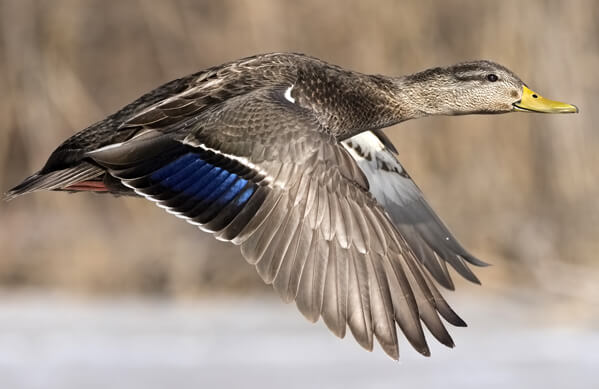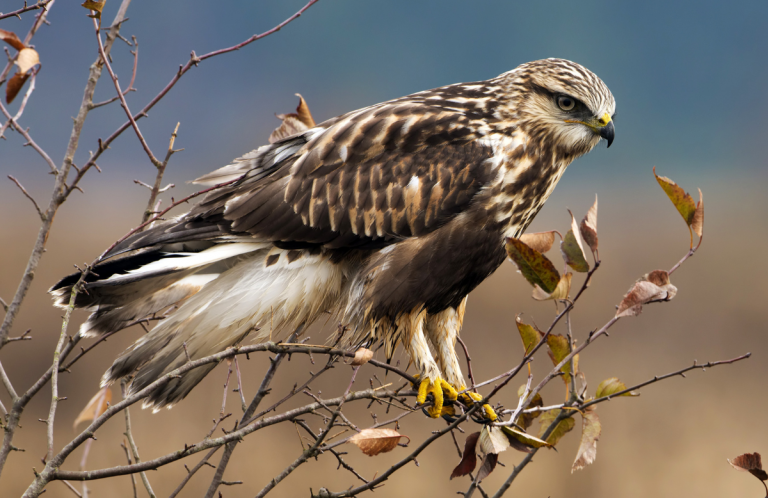 The American Black Duck isn't actually black. A closer look reveals that its plumage is a medley of dark brown, beige, and tan that gives it the folk name "Dusky Duck."
The American Black Duck isn't actually black. A closer look reveals that its plumage is a medley of dark brown, beige, and tan that gives it the folk name "Dusky Duck."
While the male Black Duck could be mistaken for a very dark female Mallard at first glance, several clues make clear that it's a distinctive bird. The Black Duck has a dark brown body contrasting with a pale brown head and yellow bill, as compared to the female Mallard's paler body and orange-and-black bill.
In flight, the Black Duck's solid purplish-blue speculum (wing patch) and light underwing linings are characteristic. Its reddish-orange legs and feet account for the species name rubripes (Latin for “red foot”).
Dusky Dabbler
The American Black Duck is a considered a "dabbling" duck species due to its habit of feeding at or just below the water's surface, where it consumes aquatic plants and small invertebrates. They do more than dabble in the water, though. Black Ducks are excellent swimmers and will dive if necessary to escape from predators. On land, the ducks also forage for seeds, grasses, and grains.
Duck in Decline
Once the American Black Duck was a familiar sight along the Atlantic Flyway, a broad migratory path following the east coast of North America used by hundreds of bird species, ranging from Black Skimmer to Black-throated Blue Warbler. But numbers of Black Duck have decreased, with the North American Breeding Bird Survey recording a decline of about 84 percent between 1966 and 2014.

Black Duck pair by Michael J. Parr
One reason for American Black Duck declines is competition and hybridization with the closely related Mallard. While the Black Duck has declined, the Mallard population has increased. Mallards have the edge in this genetic competition because they can thrive and nest in degraded habitats, often close to human activity. The American Black Duck tends to be more shy, preferring to nest in quiet marshes and sheltered forest pools.
Coastal habitat loss — due to development, pollution, and wetland conversion — is another important reason for Black Duck declines. Like other water birds such as Trumpeter Swan, it's susceptible to lead poisoning from spent lead shot, ingested while the birds forage in wetlands.
Overhunting may also have played a role in the population loss. Because of its wary nature and evasive habits, the species is especially prized by waterfowl hunters. Stricter laws have reduced the number taken by hunters from about 800,000 in the 1960s and 1970s to closer to 100,000 today.
Sign up for ABC's eNews to learn how you can help protect birds
Coastal Conservation
ABC helps support habitat conservation work for American Black Ducks through the Atlantic Coast Joint Venture (ACJV). This coalition of local, regional, and national partners protects important habitat for this duck and other species such as Black Rail and Saltmarsh Sparrow through habitat restoration and land acquisition projects.
With ABC support, the Joint Venture has developed a map-based habitat priorization tool that identifies the acres of wintering habitat that should be restored, protected, or maintained to ensure a healthy population of Black Ducks. “Thanks to help from our friends at ABC, we are now able to guide conservation on the ground for this important waterfowl species,” said Aimee Weldon, ACJV Coordinator.
Donate to support ABC's conservation mission!



















































